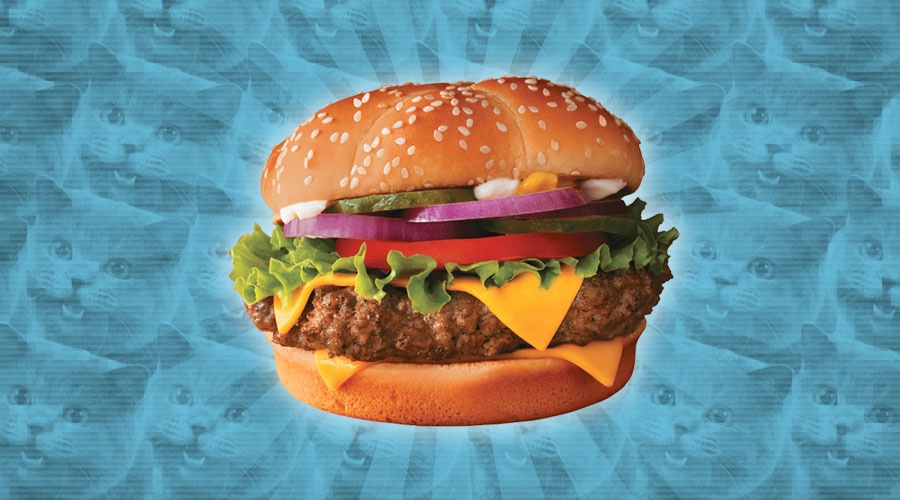How silliness is disrupting media

We think of Facebook, Uber, and Airbnb as companies that have forever changed society as we know it, but major disruption can sometimes be more silly than serious.
Take online GIF database Giphy, where users can sift through a massive archive of looping visuals that range from the cute and hilarious, to the timely and relevant.
You may be tempted to write the site off as an amusing distraction, until you find out that it was recently valued at $600 million and described as “a model for a new kind of media company”.
Once you look past the goofiness of the content, it’s hard not to see a new form of on-demand, moving image-based social communication, enabled by the platform. And that’s nothing to joke about.
I can has memes?
One entrepreneur who was at the forefront of a similar shift in popular digital content was Ben Huh.
Huh is now working with Y Combinator Research’s New Cities initiative, but before venturing into urban design, he was involved in a different kind of domain: internet memes.

To many people, Huh is best known as the former CEO of the Cheezburger Network, a series of blogs centered around memes and online humor, which played a major role in propelling a then-underground internet culture into mainstream visibility.
It all started in 2007, when Huh stumbled upon I Can Has Cheezburger?, a blog dedicated to sharing cat memes (or lolcats). Where most saw funny pictures of cats, Huh saw something more.
“The market that existed for participatory web 2.0 media was very nascent and had a lot of room to grow,” he told Wamda.
Framing memes as a new form of social user-generated content, Huh scored $2.25 million in funding from angel investors to acquire the blog and launch the Cheezburger Network, which would later expand to include other internet humor sites, such as FAIL Blog and Know Your Meme.
Tools and talent
In addition to hosting memes, the Cheezburger Network also gave users a tool with which to create them - the LOL Builder - that Huh believes set them apart from other meme aggregation sites in the early days.
“We became the place where creative people went to create content, and that was really valuable to us,” he told Wamda.
But that was the late 2000s and, as Huh admits, “the economics of this has changed”. There’s a new need to provide users with distribution channels and revenue streams to compliment these kinds of tools, so creating a place where talent can be drawn and cultivated is the way to go, according to Huh.
This is an approach the previously mentioned Giphy seems to be well aware of. In addition to aggregating GIFs from across the web, the site also offers users a creation tool, the Giphy Cam app, and even has an Artists section which hosts original animated content.
Changing society

Memes, GIFs, and six second looping videos (rest in peace, Vine) are all things one might call ‘silly things’.
But could any ‘silly thing’ be the next massive online craze?
For Huh, what gives a ‘silly thing’ potential is its ability to change society. He cites the popularity of blue jeans in Cold War era Eastern Europe as an example.
During that period, Hollywood films had made blue jeans a symbol of freedom and rebellion, which made them a highly sought after (and illegal) commodity. Risking your life for a pair of pants from the movies seems very silly; but it wasn’t about the pants, it was about what they symbolized.
“Culture is what makes us relate to one another, and that is one of the best ways to make peace in the world, is to help share your culture with another person,” Huh said.
Content explosion
Huh’s days at the helm of the Cheezburger Network came to an end when he stepped down as CEO in 2015.
When asked what ‘silly thing’ he might have focused on if he were launching the Cheezburger Network today, he had a not-so-silly answer: “I would actually work on a tool that helps people create new forms of content. Not new content, but new forms of content.”
Huh believes that we are currently witnessing “an explosion in the way we experience the world”, citing virtual reality (VR) and augmented reality (AR) as key elements of that.
AR alone could completely reinvent even the most mundane aspects of our daily lives. “How do you watch the news in AR? Do you want a flatscreen TV like you do in the real world? Or is it gonna be something totally different?” Huh asks.

And the future is not that far away, as AR has already started finding a home in our day-to-day lives and self-expression toolkits.
With its assortment of fun and crazy filters, Snapchat has introduced AR to the masses. Even Giphy has taken note, adding a nifty new AR feature to the latest update of its Giphy Cam app, Giphy Cam 2.5, repurposing 2D content for 3D space.
As technology continues to develop, so will the way we create content, share content, and experience content. And in turn, so will our societies and cultures. But what remains certain is: the silliest thing you can do with ‘silly things’ is discount them as nothing more than ‘silly things’.


